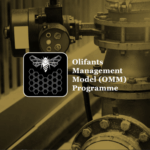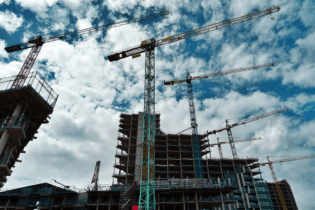With Eskom announcing the possibility of load shedding over the next 18 months in February this year, it’s no revelation that South Africa’s energy situation is precarious.
By Janine Espin, Managing Director at EDS
Because Eskom alone cannot supply the R1 trillion investment in power generation, transmission and distribution needed before 2030 in terms of the Integrated Resource Plan (IRP), private sector participation will be essential. A such, our focus on the supply of renewable energy by Independent Power Producers (IPPs) needs to intensify. However, this will require the obstacles that currently hinder private sector energy solutions to be removed, in order to give the renewable energy sector the space it needs to grow. Independent Power Producers: the current reality Renewable energy holds great promise for South Africa, and since its inception in 2011, the Renewable Energy Independent Power Producer Procurement program has planned for the creation of 38 701 full-time jobs and a contribution of more than $14 billion in private sector investment in South Africa, according to Minister of Energy Jeff Radebe. 102 IPP projects have been procured from four bidding round windows with the announcement of the fifth window hotly awaited. These projects use a variety of renewable energy technologies including biomass, landfill gas, hydro, solar (concentrated solar power and photovoltaic) and onshore wind. The new IRP 2019: making progressAfter many years of debate, the Integrated Resource Plan was finally published by the Department of Energy in 2019. Although there is concern that the Plan is inadequate in a number of aspects, these concerns must be viewed through the prism of a handful of developments.
The first being the encouragement for IPPs to bring forward the new renewables commissioning date from 2025 to 2022, along with an increase in the annual allocation for large-scale corporate power purchase agreements.
Additionally, an annual commissioning of 1.6GW of wind energy between 2022 and 2030 has been introduced, which is anticipated to create as many as 16 000 direct jobs annually over the eight-year period. So, what’s next for IPPs?While there is no indication as to when the fifth round of bidding is due to start for companies to submit their proposals for consideration by the Department of Energy, IPPs and companies in related industries should not lose hope or sit idle. Due to the fact that these IPP projects can have such a positive impact on unemployment in surrounding rural areas and contribute to the strengthening of our power position and ultimately our economy – IPPs should be using the time to prepare. Those local businesses in close proximity to IPP sites, that have the potential to supply goods and services to IPP’s, need to make sure they comply with the necessary requirements to become a preferred supplier. This is critical, because non-compliance will limit the ability for renewable energy projects to make an impact on the area in which they are located. This means ensuring the company is registered with CIPC and South African Revenue Service (SARS) for tax compliance, in addition to registering with the Department of Labour and obtaining the necessary compliance certificate in this regard. These processes can be lengthy to complete, so it’s advisable for companies to use their time wisely now to give themselves the benefit of being prepared and ready to dive straight into the real work of growing the renewable energy sector when the fifth bidding round is announced.
Latest News Stories
- WACO Group Announces new Managing Directors for SGB-Cape and SkyJacks, Strengthening Leadership Across Its Industrial Services Portfolio

- Water-wise Solution For Municipal Wastewater Maintenance

- Climate Fund Managers commits USD 86.2 million to advance the Olifants Management Model Programme in South Africa









